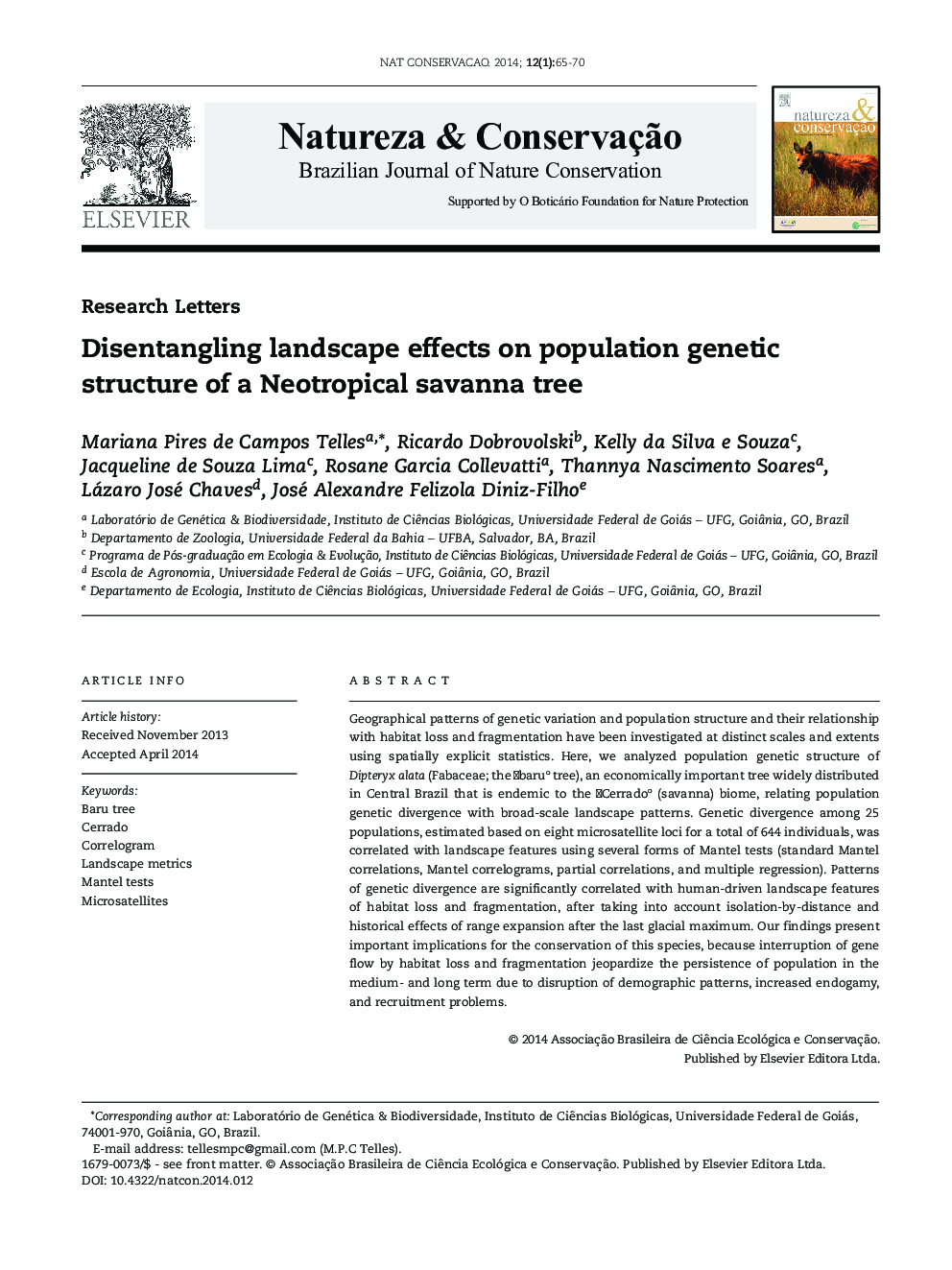| Article ID | Journal | Published Year | Pages | File Type |
|---|---|---|---|---|
| 4400883 | Natureza & Conservação | 2014 | 6 Pages |
ABSTRACTGeographical patterns of genetic variation and population structure and their relationship with habitat loss and fragmentation have been investigated at distinct scales and extents using spatially explicit statistics. Here, we analyzed population genetic structure of Dipteryx alata (Fabaceae; the “baru” tree), an economically important tree widely distributed in Central Brazil that is endemic to the “Cerrado” (savanna) biome, relating population genetic divergence with broad-scale landscape patterns. Genetic divergence among 25 populations, estimated based on eight microsatellite loci for a total of 644 individuals, was correlated with landscape features using several forms of Mantel tests (standard Mantel correlations, Mantel correlograms, partial correlations, and multiple regression). Patterns of genetic divergence are significantly correlated with human-driven landscape features of habitat loss and fragmentation, after taking into account isolation-by-distance and historical effects of range expansion after the last glacial maximum. Our findings present important implications for the conservation of this species, because interruption of gene flow by habitat loss and fragmentation jeopardize the persistence of population in the medium- and long term due to disruption of demographic patterns, increased endogamy, and recruitment problems.© 2014 Associação Brasileira de Ciência Ecológica e Conservação. Published by Elsevier Editora Ltda
